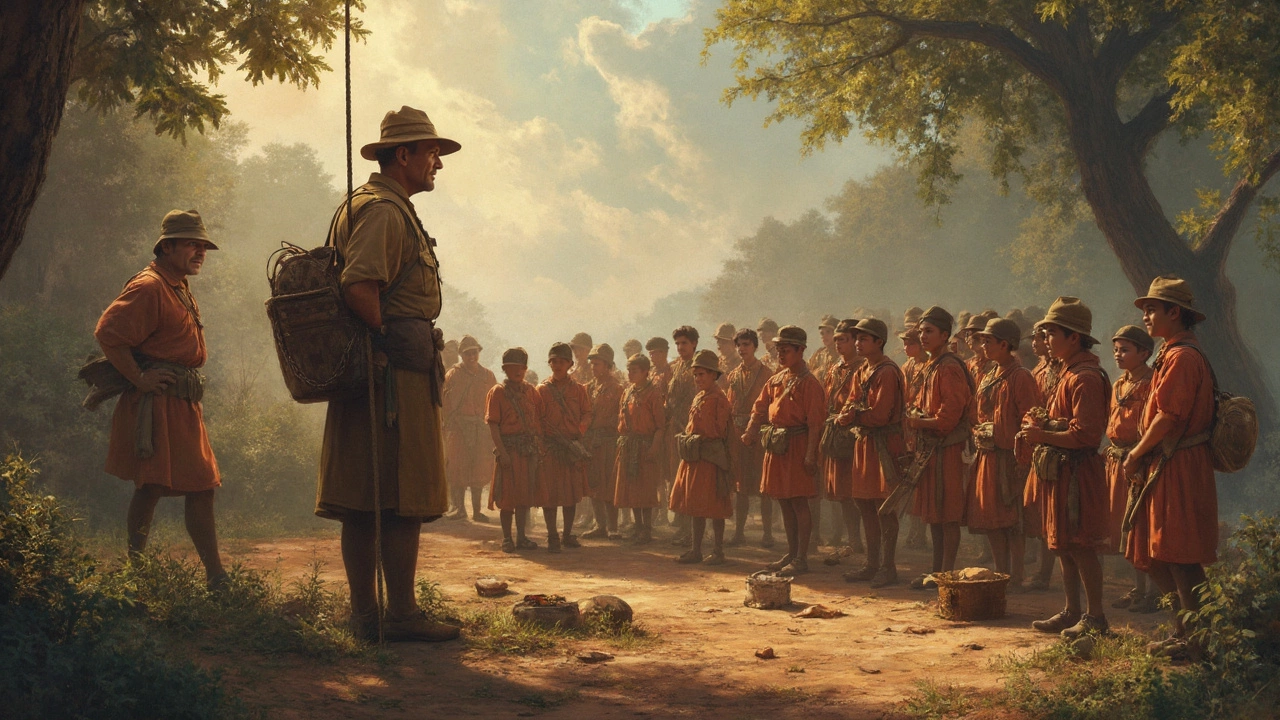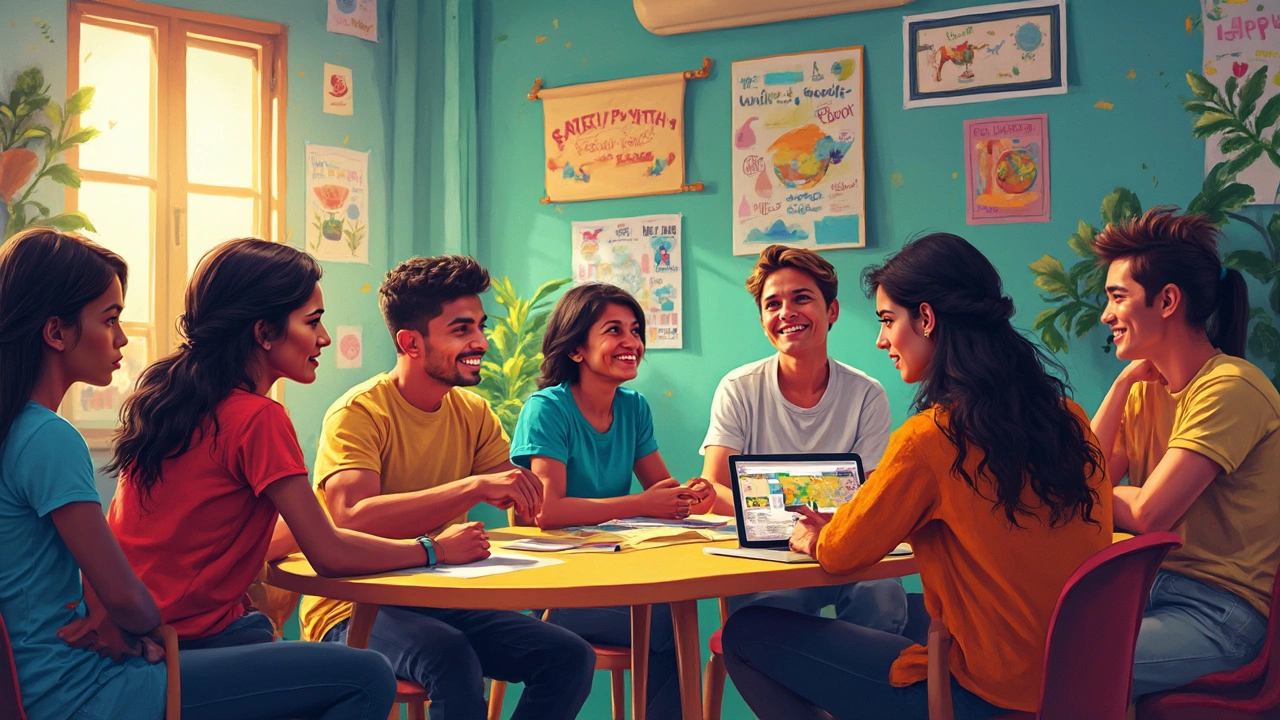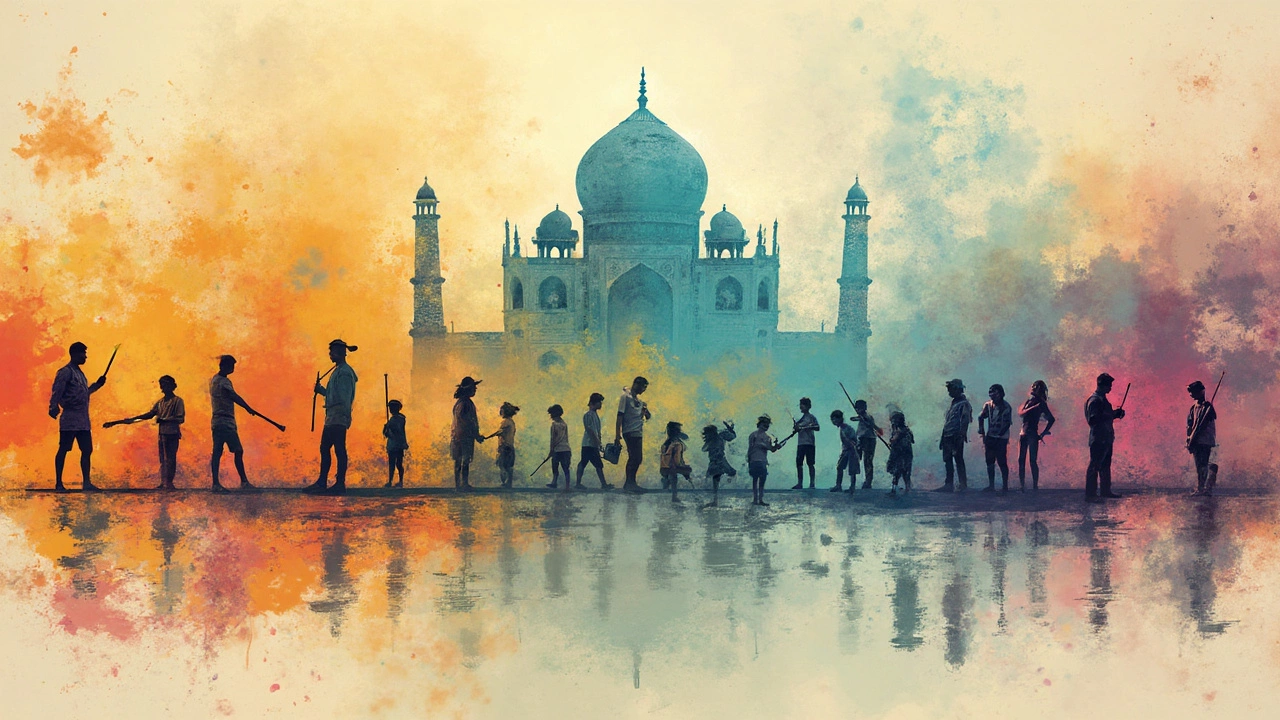Unraveling the First Youth Organization in History
 Mar, 30 2025
Mar, 30 2025
Ever wonder how youth organizations came to be? Well, picture this: it was the early 1900s, and a guy named Robert Baden-Powell decided it was high time to shape up the way we approach youth development. And that's how the Boy Scouts, the first worldwide youth organization, sprung into action. They weren’t just sitting by campfires singing songs—they were all about teaching practical skills and building character.
Why does all this matter today? Because these organizations have evolved into incredible platforms where young people can learn, grow, and even lead movements. So, whether you’re a teen looking to join or a parent hoping to get your kid involved, understanding where it all started might just inspire the next big step!
- The Birth of Youth Organizations
- Boy Scouts and Their Legacy
- Influence on Modern Groups
- Why Youth Organizations Matter Today
- Getting Involved: A Guide for Youth
The Birth of Youth Organizations
Alright, let's travel back in time to the late 19th and early 20th centuries. Society was beginning to recognize that young people needed some guidance beyond what they learned at home or school. This realization gave rise to what we now call youth organizations.
The Boy Scouts, probably the most famous of these early groups, came into existence thanks to Robert Baden-Powell in 1907. After his experiences in the military, he saw the potential for molding young minds to be more resourceful and responsible. As Baden-Powell put it, "The most worthwhile thing is to try to put happiness into the lives of others."
The most worthwhile thing is to try to put happiness into the lives of others.
Baden-Powell's idea was simple but powerful: put together activities like camping, hiking, and first-aid training that would prepare young people not just to survive, but to thrive. It wasn't just about fun in the outdoors—it was a movement to instill values like teamwork and leadership.
The success of the Boy Scouts paved the way for similar initiatives, sparking a global movement. In America, the roots of organizations like the Girl Scouts and Camp Fire followed shortly after, each adapting the core idea to fit their culture and communities. Here's a quick snapshot of what seemed to work so well:
- Focus on character: Teaching life skills and morals.
- Community involvement: Encouraging active participation in local communities.
- Adventure and fun: Making learning engaging and enjoyable through outdoor activities.
Why did this model spread so rapidly across the globe? Simply put, it addressed a universal need for structured, informal education for the youth and, well, who doesn't love a little adventure on the side?
Boy Scouts and Their Legacy
The Boy Scouts kicked off in 1908, all thanks to Robert Baden-Powell, who was inspired by his military experiences and a desire to empower young people. He published 'Scouting for Boys,' a handbook that challenges kids to grow through activities focusing on survival skills, teamwork, and self-reliance. This concept caught fire fast—like marshmallows over a campfire—and soon the movement spread around the globe.
What's so special about the Boy Scouts? Well, they didn't just teach boys how to tie knots or start campfires; they crafted a framework that encouraged leadership and moral values. The global reach grew rapidly, and by the 1920s, there were over a million Scouts worldwide. It was more than just fun in the woods; it was about preparing youth to take on life's challenges with confidence and integrity.
The legacy of the Boy Scouts is still felt today. They've evolved to include girls in many regions and remain relevant by adapting to modern interests like robotics and environmental science, ensuring that they continue to foster youth empowerment. Remarkably, this organization has produced many notable alumni, including astronauts, presidents, and even famous artists. The skill-building, friendships, and sense of community fostered in Scouting last a lifetime.
| Year | Milestone |
|---|---|
| 1908 | Formation in the UK |
| 1910 | Boy Scouts of America established |
| 1920 | First World Scout Jamboree |
| 1976 | First female Scouts allowed in Sweden |
The Boy Scouts have left a legacy that's about much more than camping badges. If you're part of this community or have been, you'll know that each meeting, trip, or badge ceremony contributes to character development. It's like building a liferaft, skill by skill, for navigating life's unpredictable waters.

Influence on Modern Groups
The trailblazing spirit of the Boy Scouts has left a massive footprint, shaping modern youth organizations as we know them. These groups have taken cues from the Scouts' core values and aims to encourage young people to learn essential skills and foster personal growth.
One great example is the Girl Scouts, formed in 1912, just a couple of years after their male counterparts. They've grown enormously worldwide and still focus on empowering girls through volunteer work, leadership opportunities, and practical life skills education.
Fast forward to today, and you see the Scouts' influence in groups like 4-H Clubs and Boys & Girls Clubs of America. These organizations nurture interests in science, community service, and even technology. For instance, the 4-H program is all about practical "learning by doing," emphasizing agriculture, health, and science.
The reach of these youth organizations now extends to more specialized offerings like coding clubs and environmental groups. Organizations such as Code.org and Eco-Teens encourage young minds to engage with critical skills like programming and environmental stewardship. They owe a nod to the Scout movement for paving the way in nurturing curiosity and skill development.
As we've seen, these groups are about more than just fun activities. They offer a way for today's youth to get involved in something bigger, whether it's tackling climate change, closing the digital skills gap, or working on local community projects. All thanks to the groundwork laid by folks like Baden-Powell over a century ago.
Why Youth Organizations Matter Today
So, what's the big deal about youth organizations these days? Well, imagine a space where young folks can hang out, learn life skills, and work on something bigger than themselves. That’s precisely what these groups offer. They’re like a nurturing ground for future leaders and innovators.
First, let's talk about skills. Being part of a youth organization can teach a heap of things you don't always get in school—like leadership, teamwork, and problem-solving. These aren't just fun extras; they’re the building blocks for success in adulthood.
Besides, have you seen the positive community impact? When kids come together, they can drive real change. Remember how the Boy Scouts started? It wasn't just camping; it was training responsible citizens. Today's organizations carry forward that legacy by organizing clean-up drives, fundraising for causes, and even small-scale activism.
- Empowerment: They give youth a voice and a sense of purpose.
- Social Connections: Kids make friends who often become lifelong buddies.
- Diverse Opportunities: From sports to arts and even coding clubs.
Need some numbers to wrap your head around this? Check this out:
| Aspect | Impact |
|---|---|
| Volunteer Hours | Over 6 million annually, teaching responsibility and empathy |
| Leadership Programs | 70% of participants report improved leadership skills |
At the heart of everything, these organizations aim to empower young people, show them the ropes of being active community members, and help them develop a sense of pride and confidence. And that's exactly why youth organizations matter now more than ever.

Getting Involved: A Guide for Youth
Thinking about diving into the world of youth organizations? It's an awesome idea because these groups offer a ton of benefits. Not only do they provide a chance to make new friends and learn new skills, but they also help you make a difference in your community. Plus, being part of such organizations could lead to opportunities that might surprise you, like scholarships or leadership roles.
If you're unsure where to start, here’s a simple guide:
- Explore your interests: Think about what excites you. Do you feel passionate about the environment, helping others, or perhaps learning survival skills like the Boy Scouts? Knowing what interests you can help you find a group that matches your passions.
- Research local organizations: Check out what’s available around your area. Many schools and community centers offer information about youth organizations. Don’t hesitate to ask your friends or family if they know of any groups you can join.
- Attend a meeting: Most groups allow visitors to sit in on a meeting. This gives you a chance to feel the vibe, meet the members, and see if it’s a good fit for you.
- Get involved: Once you’ve found a group you like, jump in! Attend meetings regularly, volunteer for events, and don’t be afraid to take on leadership roles. The more you put in, the more you'll get out.
Still not sure? Here’s a little motivation. A recent survey showed that 78% of young people involved in such groups reported improved communication skills, and 85% said they felt more confident about their future.
If you’re still on the fence, just think of the long-term benefits—not only for your personal growth but also because it looks great on college applications. So why wait? Start your journey today and become part of something bigger.